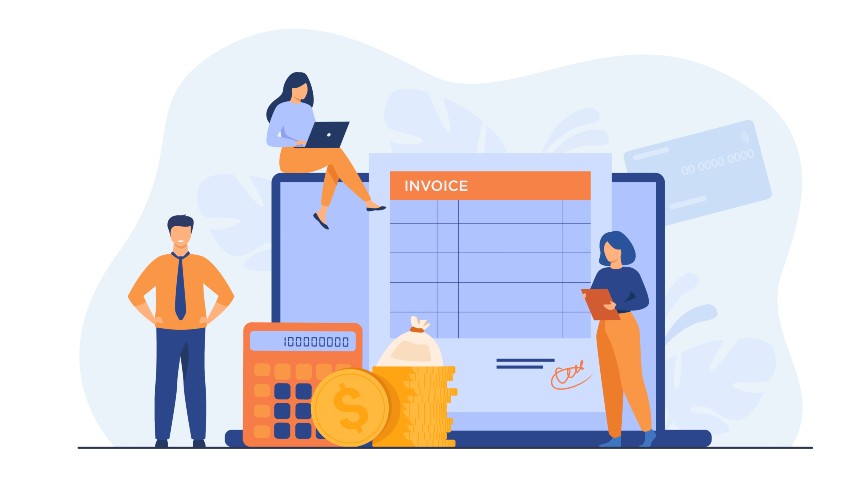Purchase Order vs Invoice: What’s the Difference?
May 8, 2025

Key takeaway
- A purchase order (PO) is a document sent by the buyer to the supplier requesting the delivery of products or services.
- An invoice is a payment request submitted by a vendor to the buyers after fulfilling the order.
- The parameters on a purchase order and an invoice are their preparation method, who they are addressed to, the details that go inside them, their processing, and their intent.
- Cflow is a well-known automation platform that can digitize the generation and processing of purchase orders and invoices.
Table of Contents
What is a Purchase Order?
By definition, a purchase order (PO) is a document sent by the buyer to the supplier requesting for delivery of products or services. The delivery date specified in the PO is later than the generation of the purchase order. Also, the payment for the products and services requested in the purchase order need not be done immediately. Details like the date of delivery, cost, place of delivery, etc. are included in the purchase order. A purchase order is an official confirmation of the order for products or services. Once a purchase order has been accepted by the vendor, it becomes a legally binding contract. The vendor uses the PO as a means to offer credit to the buyer, without any risk of delayed or missed payment because a PO legally binds the buyer to pay once the goods are delivered. A purchase order can be used in place of a legal contract in situations where a legal contract is absent. A unique identification number is assigned to each PO for easy and transparent order processing. Also Read: purchase requisition definition
The information mentioned in a purchase order varies in each organization, however, a few commonly mentioned details are the name of the company buying goods/services, date, the number of goods/services, price, delivery address, payment terms, and purchase order number. Buyers can issue blanket purchase orders for an ongoing purchase until a threshold is reached.
A purchase requisition is submitted for internal product/service requirements. Once the purchase requisition is approved, it becomes a purchase order that is submitted to the vendor for approval and processing. Purchase orders ensure a smooth and transparent buying process. It is also very useful in the audit since a clear transaction trail is recorded.
What is an Invoice?
An invoice is a payment request submitted by a vendor to the buyers after fulfilling the order. Sales invoices bills or statements are some of the other terms that refer to invoices. An invoice specifies the list of goods or services delivered and the buyer’s payment. The practice of invoices dates back to the Mesopotamian era when stone invoices were used to record transactions. From stone invoices to mobile invoices the journey has been quite eventful. Only the form of the invoice has changed, the need and intent of an invoice have been the same over the years – which is requesting payment. A well-drafted invoice must contain all the information required by the buyer to make payment and also address any queries that may arise. Invoicing is extremely important for small companies it is the sole means to get paid for services/products. Having an invoice template helps businesses save time by simply repopulating the information every time an invoice is raised, instead of preparing a fresh invoice each time.Invoices are used for:
- Requesting timely payments from customers
- Keeping a tab on sales
- Tracking inventory in product-based businesses
- Forecasting sales
- Recording business revenue for taxation
End-to-end workflow automation
Build fully-customizable, no code process workflows in a jiffy.
Purchase Order vs Invoice
The above points make it clear that the purchase order vs invoice is not the same. Let us now look at the similarities and disparities between purchase orders and invoices.| Context | Purchase Order | Invoice |
|---|---|---|
| Preparation | Prepared by the buyer for ordering goods or services | Prepared by the vendor after delivering goods and services requesting payment |
| Addressed to | Seller | Buyer |
| Details | PO number, list of goods/services, delivery date, name of the organization, and address | Invoice number, goods delivered, price of each item, discounts, and tax, the total amount due, payment due date |
| Time | Generated while placing order | Generated after delivering the order |
| Intent | Detail’s contract of the sale | Confirms the sale |
| Legal | Legally binding document | Legally binding document |
| Common details | The names and addresses of the buyer and seller are mentioned | The name and address of the buyer and seller are mentioned |
| Audit | Helps in financial auditing | Helps in financial auditing |
| Processing | Enables smooth and transparent purchase processing | Enables smooth and transparent payment processing |
Taking the Digital Plunge
Both purchase order and invoice processing can be optimized by taking the digital path. Handling POs and invoices is more transparent, efficient, and optimized by digitizing the workflow.Cflow from Cavintek is a powerful workflow automation solution that caters to business requirements of all scales and types. Sign up for a free trial today and you’ll know why Cflow is the right choice.
What should you do next?
Thanks for reading till the end. Here are 3 ways we can help you automate your business:

Do better workflow automation with Cflow
Create workflows with multiple steps, parallel reviewals. auto approvals, public forms, etc. to save time and cost.

Talk to a workflow expert
Get a 30-min. free consultation with our Workflow expert to optimize your daily tasks.

Get smarter with our workflow resources
Explore our workflow automation blogs, ebooks, and other resources to master workflow automation.

